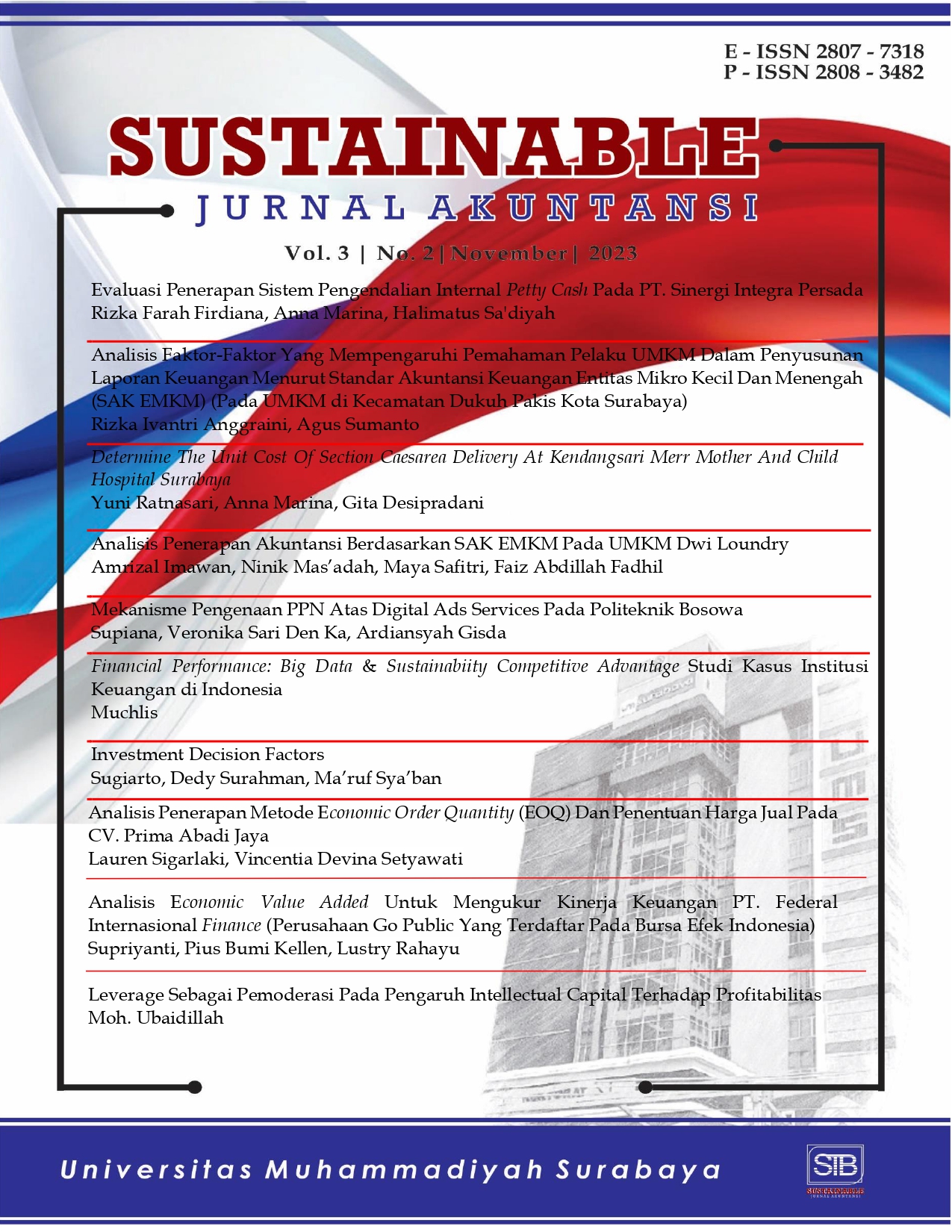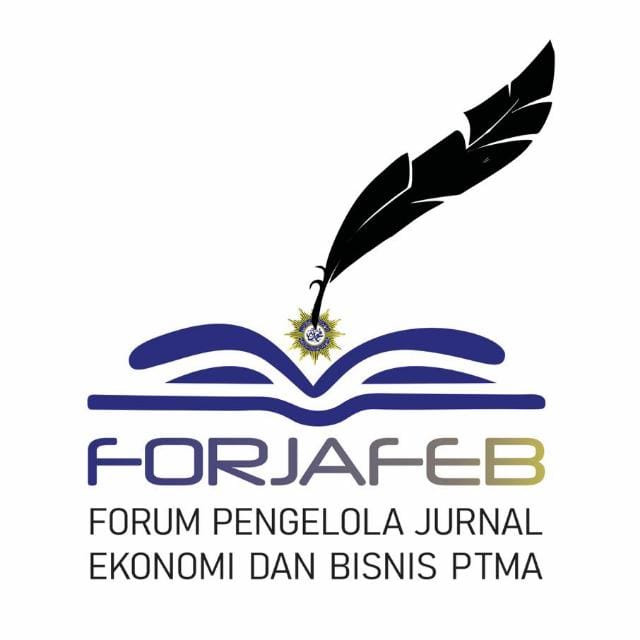Analisis Economic Value Added Untuk Mengukur Kinerja Keuangan PT. Federal Internasional Finance (Perusahaan Go Public Yang Terdaftar Pada Bursa Efek Indonesia)
DOI:
https://doi.org/10.30651/stb.v3i2.21029Keywords:
Financial report, Financial performance, economic value addedAbstract
ABSTRACT
This study aims to assess the financial performance of PT. Federal Internasional Finance, a listed company on Indonesia Stock Exchange using the Economic Value Added method. The research was conducted from February to March 2023 using documentation data collection techniques in the form of published financial statements obtained through the Indonesia Stock Exchange, the official website of PT. Federal Internasional Finance and various literature related to research. The analysis was carried out using case study research with a quantitative descriptive approach. The focus of this research is on the financial statements of PT. Federal Internasional Finance for five years, from 2017 to 2021. The analysis technique used is the calculation of Economic Value Added which is calculated in three components, namely NOPAT, WACC and Invested Capital. The results of this study show that PT. Federal Internasional Finance is considered to have good financial performance, judging from the EVA value which shows a positive number. This situation can be interpreted to mean that PT. Federal Internasional Finance has succeeded in creating economic added value.
Keywords: Financial report, Finansial performance, economic value added
References
DAFTAR PUSTAKA
Amri, Nurul Prasetya, Eka B., & Ramadhan, Yanyan H., 2017. Penerapan Metode Economic Value Added (Eva) Pada Aplikasi Penjualan Berbasis Yii Framework (Studi Kasus: Salam Digital Image), Jurnal Sistem Informasi, Teknologi Informasi dan Komputer, 55-63.
Baridwan, Zaki, 2013. Sistem Informasi Akuntansi, edisi kedua, Yogyakarta: BPFE.
Brigham, E. F., & Houston, J. F, 2009. Dasar-dasar Manajemen Keuangan, Jakarta: Salemba Empat.
Creswell, J. W, 2015. Educational Research “Planning, Conducting, and Evaluating Quantitative, Boston: Pearson.
Fahmi, Idham, 2014. Analisa Laporan keuangan, Bandung: Alfabeta.
Hamzah, Z. Z., & Alawiyah, Sarah, 2020. Analisis Kinerja Keuangan Dengan Pendekatan Metode Economic Value Added (EVA) Pada PT. Blue Bird Tbk Periode 2014-2018. Economicus, Vol.14 , 145-156.
Harahap, Sofyan S., 2015. Analisis Kritis atas Laporan Keuangan, Jakarta: Rajawali Press.
Hidayat, Wastam W., 2018. Dasar-Dasar Analisa Laporan Keuangan, Ponorogo: Uwais Inspirasi Indonesia.
Husnan, Suad & Pudjiastuti, Eny, 2012. Dasar-Dasar Manajemen Keuangan Edisi keenam, Yogyakarta: UPP STIM YKPN.
Karamoy, J., Tampi, D. L., & Mukuan , D. D., 2016, Analisis Economic Value Added (EVA) pada PT. Bank Negara Indonesia TBK. Jurnal Administrasi Bisnis, IV(4), 45-55.
Kasmir, 2008. Analisis Laporan Keuangan, Depok: Rajagrafindo Persada.
Martani, Dwi. 2012. Akuntansi Keuangan Menengah Berbasis PSAK, Jakarta: Salemba Empat.
Mulyadi, 2001. Balanced Scorecard : Alat Manajemen Kontemporer Untuk Pelipat Ganda Kinerja Keuangan Perusahaan, Jakarta: Salemba Empat.
Munawir, Slamet, 1997. Analisa Laporan Keuangan (Keempat ed.), Yogyakarta: Liberty.
O'Byrne, S. F & Young, D. S., 2001. EVA dan Manajemen Berdasarkan Nilai : Panduan Praktis Untuk Implementasi, Jakarta: Salemba Empat.
Rudianto, 2013. Akuntansi Manajemen, Jakarta : Airlangga.
Sugiyono, 2019. Metode Penelitian Kuantitatif, Kualitatif dan R&D, Bandung: Alfabeta.
Downloads
Published
Issue
Section
License
Copyright (c) 2023 SUSTAINABLE JURNAL AKUNTANSI

This work is licensed under a Creative Commons Attribution 4.0 International License.
Copyright
Copyright for articles published in Sustainable: Accounting Journal.
Authors must submit copyright to the journal by signing and sending the copyright assignment form (template) via email sustainable@um-surabaya.ac.id
Authors can disseminate their articles through any media.
Licence
Every work written by the author is licensed under a Creative Commons Attribution-NonCommercial 4.0 International License.
















